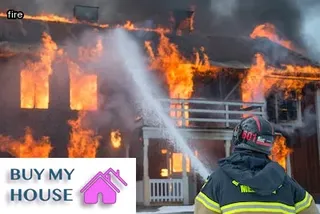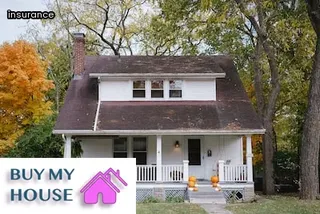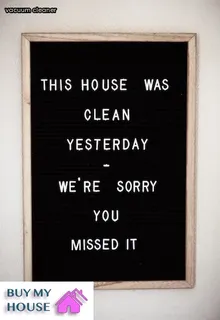Smoke damage to the home can be a serious issue, and it is essential to understand the risks associated with it. Smoke particles can cause permanent discoloration and corrosion on a variety of surfaces such as walls, ceilings, and furniture.
In addition, smoke particles can also contain toxins that are harmful to human health. Cleaning up smoke damage requires special techniques that differ depending on the type of material being cleaned.
Common household items such as sponges, vacuum cleaners and detergents may not be sufficient for cleaning up smoke damage. Professional services may be required to remove discoloration or odors from fabrics, carpets or furniture.
It is important to remember that smoke damage needs to be removed as soon as possible in order to prevent further damage from occurring. Proper ventilation is also necessary for removing lingering odors from the air and ensuring air quality remains safe for everyone in the home.

Smoke damage can have a devastating effect on your home, causing discoloration, corrosion and permanent odors. Identifying the most common types of smoke damage is key to understanding the risks and learning how to clean it up.
The primary sources of smoke damage are burning materials such as wood, oil, coal, gas and plastics. These materials produce soot when they burn, which can settle on surfaces such as walls and ceilings.
Smoke residue can also contain hazardous substances such as carbon monoxide or formaldehyde, which can linger for long periods of time if not properly removed. Another type of smoke damage comes from combustion products like ash or tar, which can corrode metal surfaces and cause discoloration on other materials in your home.
Finally, even if no visible damage is present, smoke particles can become trapped in fabrics or furniture and create an unpleasant odor that may be difficult to remove. By understanding the various types of smoke damage and taking steps to prevent them from occurring in the first place, you can help protect your home from this destructive force.
The presence of smoke damage in a home can be concerning for many reasons, not least because of the health risks associated with inhaling the toxins and particles found in smoke. It is important to understand what these risks are and how they can be mitigated by cleaning up the damage properly.
Smoke contains various hazardous materials that can cause irritation to the skin, eyes, nose and throat. In some cases, long-term exposure can lead to respiratory problems such as asthma or bronchitis.
The risk of cancer has also been linked to prolonged exposure to smoke particles. Proper ventilation and air filtration systems should be used in order to reduce the risk of breathing in these toxins and reduce the potential for further damage.
Furthermore, it is essential to use specialist cleaning services after a fire or smoke incident in order to remove any residue left behind from soot, ash or other materials. Doing so will help ensure that your home remains safe and healthy for you and your family.

Smoke damage is a serious issue that can cause significant harm to your home. Smoke is a mixture of tiny particles and gases, which when inhaled can be hazardous to your health.
Inhaling smoke can cause respiratory problems, irritation of the eyes and skin, and other medical issues. The particulate matter in smoke also contains toxic chemicals that can damage the structure of your home’s walls, ceilings, and floors.
Smoke particles are so small that they easily penetrate into porous surfaces like wood, fabric, insulation, or drywall. This means that as the smoke moves through the house it leaves a residue behind which can lead to discoloration of walls and furniture, as well as unpleasant odors.
Over time this residue builds up in the air ducts and vents which leads to poor indoor air quality. The build-up of residue in these areas can also increase fire risk by providing fuel for future fires.
Understanding how smoke affects your home’s structure is essential for protecting it from damage and keeping your family safe.
Smoke damage can have a devastating effect on your possessions and furnishings. It is important to understand the risks that smoke presents in order to protect your home from potential damage.
Smoke particles are tiny and can settle into fabrics, carpets and other porous materials such as wood and wallpaper, causing discoloration and staining. In some cases, it may even be necessary to replace certain items due to their inability to recover from the effects of smoke exposure.
Additionally, the acid found in smoke residue can corrode metals such as those found in electronics, appliances, jewelry and cabinets. In order to minimize the amount of damage caused by smoke, it is important to take preventive measures such as cleaning up any messes immediately or using special cleaners designed for smoke removal.
It is also important to keep furniture covered if possible until proper cleaning has been completed. Taking these steps will help ensure that your belongings remain safe from further harm caused by smoke damage.

Smoke damage can be a serious issue in the home, and eliminating smoke stains from surfaces and fabrics is one of the best ways to protect your family from its effects. When it comes to smoke stains, understanding the risks and learning how to clean them up are key.
To begin with, you should identify what type of smoke stain it is. For example, cigarette smoke can leave behind sticky tar residue that requires specialized cleaning solutions, while soot from a fire will require different strategies.
Once you know what kind of stain it is, you can start treating it accordingly. Vacuuming and wiping down surfaces with a damp cloth may be enough for certain types of stains, but for more stubborn ones you may need to use products such as degreasers or detergents.
It's also important to remember to wear protective gear such as gloves and eye protection when dealing with any kind of smoke-damaged surfaces. If the stain has penetrated into fabrics, then dry cleaning or spot cleaning may be necessary depending on the material.
Finally, if all else fails or if the smoke damage is especially severe, professional help may be needed in order to restore items back to their original condition.
The possibility of completely removing smoke damage from a home is highly dependent on the extent of the damage. It is possible to remove some of the smoke damage, but it is very difficult to completely eliminate all traces.
Smoke residue can penetrate deep into porous materials such as carpet, furniture, and drywall, leaving an unpleasant odor and discoloration. In order to effectively remove smoke damage, it is important to understand how smoke affects building materials and what methods are available for clean up.
Homeowners must also be aware of any potential health risks that may be associated with smoke exposure. By understanding these risks and learning how to properly clean up after a fire or other event involving smoke, you can protect your home from future smoke damage.

Minimizing exposure to dangerous air pollutants is an important step in protecting your home from smoke damage. Since inhaling high concentrations of smoke particles can cause serious health issues, it’s crucial to understand the risks and learn how to clean up the affected area.
When dealing with smoke damage, make sure to open all windows and doors to allow ventilation and keep windows closed if you live near a busy road or industrial area. Additionally, use a HEPA filter vacuum cleaner to remove as much of the smoke particles as possible.
It is also important to wear protective gear such as gloves, goggles, long-sleeved shirts and pants when cleaning areas that have been exposed to smoke. Be sure to thoroughly scrub walls and furniture with a detergent solution designed for smoke removal and change out your HVAC filters regularly.
Finally, consider investing in an air purifier with a HEPA filter in order to keep your home free from dangerous air pollutants.
When dealing with the risks of secondhand smoke, it is important to take precautions to protect your home and its inhabitants. Over time, long-term exposure to secondhand smoke can cause serious health problems.
This can include breathing difficulties, asthma, bronchitis, and even cancer. It is important to be aware of the dangers of secondhand smoke and understand how to mitigate these effects.
Ventilation is key in preventing buildup of smoke particles in your home. Keep windows open or use fans and air purifiers when possible.
Additionally, you can use furniture covers and upholstery treatments that are designed for smoke removal. Regularly replace air filters inside your home and clean carpets and furniture often as well.
Taking these steps will help protect you from long-term exposure to secondhand smoke in your home environment and reduce the potential for health risks associated with it.

Taking preventative measures to reduce the risk of fire can be especially important in a house that has experienced smoke damage. To protect your home and family, it is essential to identify potential sources of fire hazards in the home, such as faulty wiring or appliances with worn cords.
Inspect any exposed wiring, replace old outlets and light switches, and use surge protectors where necessary. It is also important to make sure that all flammable materials are stored away from heat sources and kept away from any open flames.
Smoke alarms should be installed throughout the home, tested regularly, and cleaned periodically. Consider installing additional smoke detectors in areas most at risk for fires such as the kitchen or attic.
Fire extinguishers should also be placed throughout the home; make sure they are readily accessible in case of an emergency. In addition to reducing fire risks, regular maintenance around the house can help prevent smoke damage from occurring in the future; this includes cleaning vents and air ducts, regularly vacuuming carpets, checking chimneys for blockages or creosote build-up, and ensuring that all fuel-burning appliances are properly vented to avoid dangerous concentrations of carbon monoxide.
Taking these steps can help keep your home safe from fire damage as well as provide peace of mind knowing that you have done everything possible to protect your family and your property.
When a smoky environment is present in your home, it is important to take the necessary steps to protect yourself and your family. It is essential to understand the risks associated with smoke damage, such as respiratory problems, fire hazards, and damaged electronics.
The first step to addressing a smoky home environment is identifying any potential fires or sources of combustion. If there are any open flames, ensure that all combustible materials are removed from the area.
Additionally, make sure that any electrical wiring or appliances are properly ventilated or turned off. After identifying any potential hazards, it is important to evacuate anyone who may be affected by the smoke.
Make sure everyone has access to fresh air and seek medical attention if needed. Lastly, clean up the environment by using approved cleaning products and wearing protective gear such as face masks and gloves.

When it comes to protecting your home from smoke damage, the first step should always be determining your needs before contacting professional cleaners. This means taking a thorough assessment of the areas affected by the smoke and identifying what type of cleaning materials may be required.
After this initial assessment, you can start researching different types of cleaning products that are designed for smoke damage removal. It's also important to consider any additional services that may be necessary such as fire restoration, odor removal, and smoke contamination prevention.
Additionally, make sure that you inquire about cost estimates and timelines for completion in order to plan out a budget and timeline that works best for you. Taking these steps beforehand can help ensure that the professional cleaners you hire are able to provide the most effective solutions for restoring your home quickly and safely.
Smoke damage can come in many forms and understanding the best ways to clean it up is essential to protecting your home. Different types of smoke damage require different cleaning strategies, and knowing which one to use is key.
Smoke residue from fires, candles or cigarettes requires completely different approaches than smoke that results from burnt food. Smoke residue can be difficult and time consuming to remove; therefore, it’s important to understand the type of smoke you’re dealing with before attempting any cleaning.
Depending on the type of smoke damage, you may need special cleaners, solvents, detergents or other agents specifically designed for removing smoke stains. If the material affected by smoke damage is delicate or expensive, such as a piece of furniture or artwork, professional restoration services may be needed.
Understanding how best to clean up the various types of smoke damage helps keep your home safe and protected from further harm.

Investing in professional cleanup services after a fire incident can be incredibly beneficial when it comes to protecting your home from smoke damage. With the help of experienced and knowledgeable professionals, you can rest assured that the job will be done right, minimizing long-term risks and ensuring that your home is returned to its original condition as quickly as possible.
Professional cleaners understand the severity of smoke damage, taking the appropriate steps to clean and repair smoke-damaged surfaces with specialized tools and cleaning products. The investment in professional cleanup services ensures that any lingering odors are removed, eliminating the risk of further contamination.
In addition, professional cleanup services provide peace of mind knowing that your home is free from potential health hazards associated with smoke damage. By investing in the right professionals for the job, you can protect your family’s health while also protecting your home from further damage due to improper cleaning procedures.
Smoke damage can have a devastating impact on your home and its contents. Not only does it leave behind an unpleasant odor, but it can also cause lasting physical damage to your walls, furniture, and other surfaces.
In addition to discoloring surfaces and fabrics, smoke damage can etch glass, corrode metals, and cause paint to peel. Smoke residue may also contain hazardous chemicals that are harmful to your health if inhaled or ingested.
To protect your home from smoke damage and minimize the risk of health problems, it is important to understand the risks associated with such damage and learn how to clean it up properly.

Sleeping in a house with smoke damage can be hazardous to your health. Smoke particles contain toxins and other chemicals that can be harmful to humans, so if you’re living in a home with smoke damage, it is important to understand the risks and learn how to clean it up.
Smoke damage can cause respiratory problems, such as coughing and sneezing, as well as skin irritation and headaches. In order to protect your home from smoke damage, it is essential to take precautionary measures.
This includes installing fire alarms and smoke detectors, using fireproof materials in the home, cleaning up any debris or ashes left behind by the fire, and ensuring that all appliances are in good working order. Additionally, proper ventilation should be used when attempting to clean up after a fire has occurred.
Taking the necessary steps to protect yourself and your family from smoke damage can help ensure that you remain safe while sleeping in your home.
Smoke damage can be claimed in many different ways. Fire, cigarettes, and other sources of smoke can all cause significant damage to your home.
Smoke particles can penetrate deep into walls, furniture, clothing, and even electronics, leaving behind an odor that is difficult to remove and surfaces that are discolored or weakened. In addition to the obvious signs of smoke damage, like discoloration or odors that linger for weeks after the incident, other items such as electronics and fabrics may suffer from a decrease in performance as a result of the exposure to smoke particles.
It's important to understand what types of damage can be claimed as smoke damage so you know how best to clean it up and protect your home from further harm.
Smoke can linger in a home for several days or even weeks after an incident. The amount of time it takes for smoke to clear out of a house depends on the type of smoke, the size of the affected area, and proper ventilation.
If you experience smoke damage in your home, it is important to understand how long it will take for the smoke to completely dissipate so that you can take appropriate steps to clean up and protect your home from further damage. In general, small areas with proper ventilation should be able to clear out within a few days, while larger areas may take up to two weeks or more.
To help ensure your home is properly ventilated and cleared of any lingering smoke particles, you should open windows, use fans and air purifiers, and clean as much as possible using vacuums with HEPA filters. Taking these steps can help minimize the risk of long-term damage caused by smoke exposure.